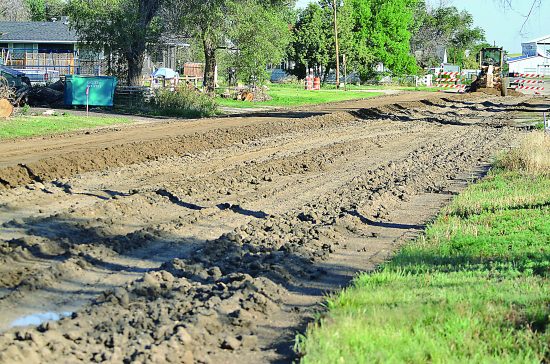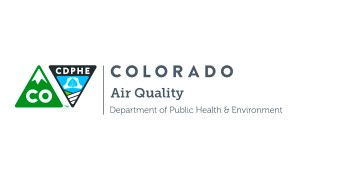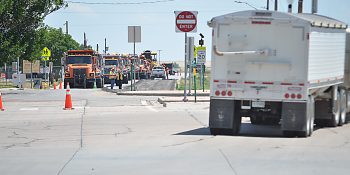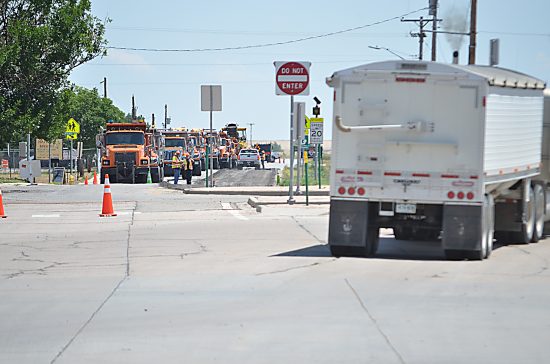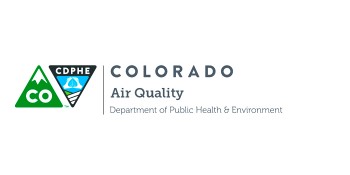The Colorado Department of Public Health and Environment and the Regional Air Quality Council have issued an OZONE ACTION DAY ALERT at 4 p.m. on Thursday, July 13, 2017 for the Front Range Urban Corridor from El Paso County north to Larimer and Weld counties, including the Denver-Boulder area, Colorado Springs, Fort Collins and Greeley.
Warm temperatures and ample sunshine, as well as light smoke transported from regional fires across the Western US, will allow ozone concentrations to reach the Unhealthy for Sensitive Groups level in the southern and western suburbs of the Denver Metro Area on Thursday and Friday.
This Ozone Action Day Alert will remain in effect until at least 4 p.m. Friday, July 14, 2017.
For statewide conditions, forecasts and advisories, visit:
http://www.colorado.gov/airquality/colorado_summary.aspx
The highest Ozone related AQI at 1 o’clock PM Mountain Standard Time on July 13, 2017, is 48 which indicates Good ozone air quality. It was recorded by the RFN ambient ozone monitor.
The highest Particulate Matter (PM2.5) related AQI at 1 o’clock PM Mountain Standard Time on July 13, 2017, is 56 which indicates Moderate Particulate Matter (PM2.5) air quality. It was recorded by the SWAN ambient monitor. Respiratory symptoms possible in unusually sensitive individuals, possible aggravation of heart or lung disease in people with cardiopulmonary disease and older adults. Unusually sensitive people should consider reducing prolonged or heavy exertion.
Front Range Air Quality Forecast & Colorado Smoke Outlook
FRONT RANGE AIR QUALITY FORECAST:
Thursday, July 13, 2017, 2:30 PM MDT
Ozone concentrations are expected to be in the Moderate to Unhealthy for Sensitive Groups range on Thursday and Friday. Unhealthy for Sensitive Groups concentrations are most likely in the southern and western suburbs of the Denver Metro Area, with high-moderate levels expected throughout the Front Range. Active children and adults, and people with lung disease, such as asthma, should reduce prolonged or heavy outdoor exertion in these areas from noon to 10 PM on Thursday and Friday.
Fine Particulate Matter concentrations are expected to be in the Good to Moderate range on Thursday and Friday. Moderate concentrations are expected throughout the Front Range. Unusually sensitive people should consider reducing prolonged or heavy exertion on Thursday and Friday.
Carbon Monoxide concentrations are expected to be in the Good category on Thursday and Friday.
Nitrogen Dioxide concentrations are expected to be in the Good category on Thursday and Friday.
Visibility on Friday is expected to be Moderate to Poor.
COLORADO SMOKE OUTLOOK:
Thursday, July 13, 2017, 2:30 PM MDT
The 350 acre Wilson wildfire is located in Rio Blanco County, approximately 8 miles north of Meeker, CO. Winds at the fire on Thursday will be out of an easterly direction, shifting to a northerly direction in the afternoon and evening. Smoke will likely be transported to the east and southeast of the fire. The heaviest smoke will likely remain confined to rural portions of Rio Blanco County; however, light to moderate smoke may affect Meeker at times. Thunderstorms are possible near the fire Thursday afternoon, and may produce gusty, erratic winds that can send smoke in any direction. Overnight, light drainage winds may allow smoke to reach lower terrain immediately below the fire, most likely affecting locations within the Strawberry Creek, Sulphur Creek, and White River drainages.
The 974 acre Gutzler fire is located in Eagle County, approximately 13 miles southwest of Kremmling. Fire behavior has greatly decreased, however light to moderate smoke may remain visible in Eagle, Grand, and Summit Counties in areas near the fire.
The 700 acre East Rim wildfire is located in northwestern Dolores County, approximately 10 miles northeast of Dove Creek. Fire behavior has decreased, however light to moderate smoke may remain visible in areas of rural Delores County in areas near the fire.
The 12,839 acre Peekaboo wildfire is located in northwestern Moffat County, approximately 44 miles northwest of Maybell. Fire behavior has greatly decreased, however light to moderate smoke may remain visible in Moffat County in areas near the fire.
The 482 acre Mill Creek wildfire is located in Routt County, approximately 15 miles northeast of Hayden. Fire behavior has decreased, however light to moderate smoke may remain visible in areas of rural Routt County in areas near the fire.
The 2,264 acre Keystone fire is located in south-central Wyoming approximately 35 miles southwest of Laramie. Winds at the fire on Thursday will be out light and variable, shifting to a southeasterly direction in the afternoon and evening. Smoke will likely be transported to the west and northwest of the fire. The heaviest smoke will likely remain confined to rural portions of Albany County in Wyoming. Thunderstorms are possible near the fire Thursday afternoon, and may produce gusty, erratic winds that can send smoke in any direction. Additionally, smoke aloft near the fire may be transported east and south, perhaps bringing periods of smoke into Larimer County and Rocky Mountain National Park. Overnight, smoke will likely be confined to locations close to the fire in south-central Wyoming.
Light to moderate smoke is also possible near prescribed fires and small wildfires around the state.
